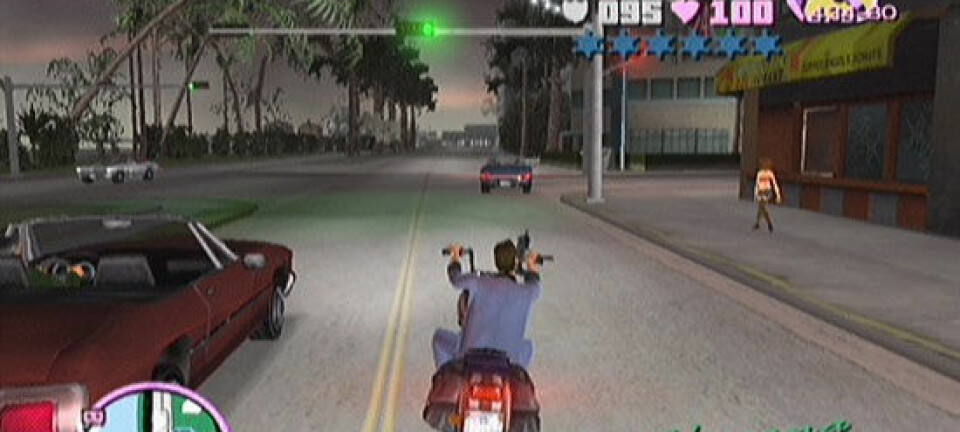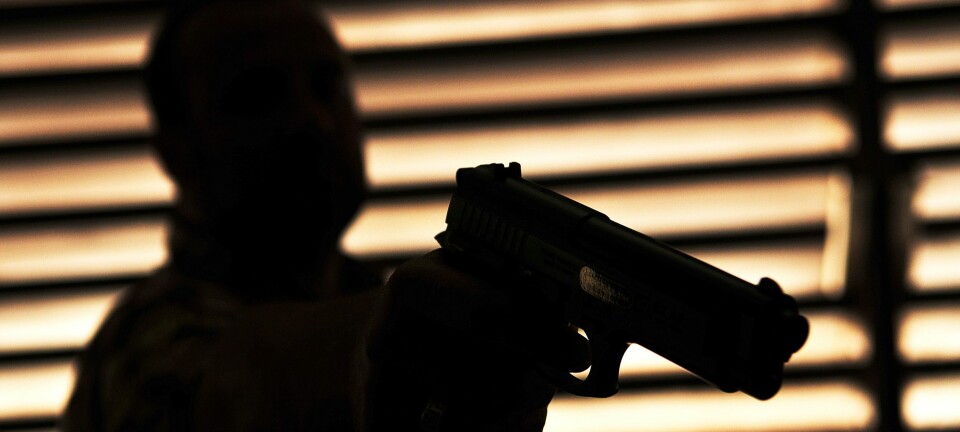What makes ’The Wire’ so special?
Biting realism, fantastic character portrayals and a controversial description of society that’s on a par with the great novels. New Nordic research takes a closer look at the popular TV series The Wire.
You may have seen the American TV series The Wire about life in and around the drug scene in a US city. If not, you should perhaps consider doing so.
The series is one of the most acclaimed in the world and viewers agree with the critics. The Wire is currently ranked third on the IMDB list of the best TV series ever.
Even scientists are impressed. Together with two colleagues, Associate Professor Jørgen Bruhn of the Department of Film and Literature at the Linnæus University in Sweden has analysed The Wire in a scientific article, published in the Danish literary journal Passage.
Researchers analyse mad project
The three researchers focused on the plot of the third season of The Wire. After two season in which the viewer is first introduced to the drug culture in a residential complex and then in the criminal working environment around the port of Baltimore, the third season focuses on the role of the police in the city.
The experiment with this scientific article consisted of combining three widely different views: my literary approach, cinematography and then the unusual criminological angle. We wanted to expand the way in which TV series are analysed, and I think it’s been an encouraging project.
The core of the third season is a seemingly mad project, initiated by the District Commander of the Baltimore Police Department, ‘Bunny’ Colvin.
The police’s daily struggle against the hard crime is leading nowhere, and since he is approaching retirement, Colvin decides to make one last desperate attempt at curbing the drug trade in the city.
He manages to get his closest police associates to secretly convince all the major drug dealers in the city to take their dealing to an empty and shut-down residential area in exchange for police immunity.
This way, the urban residential areas become free of the criminals, who are instead given free range with their dealing in their own isolated territory.
The Wire experiments on the screen
The third season of The Wire (see the trailer at the beginning of this article) describes the consequences of such an experiment:
- On the one hand, we see calmer, drug-free residential areas, which The Wire portrays in an almost caricatured manner, returning to the mid-1900s with smiling residents and flowers in the street.
- The other side is a growing hell in the secret quarter called ‘Hamsterdam’, where drug addicts mingle with dealers, their parents and their children in a messy clutter of deals, fights and murders – which the police even tries to cover up to avoid it reaching the public eye and thus put a negative focus on Hamsterdam.
Eventually the public and the heads of the police learn about the experiment. Even though the crime has clearly been removed from the city’s neighbourhoods, the Hamsterdam experiment is razed to the ground because it runs counter to the established ‘War on drugs’, which consists of a zero-tolerance policy against drug dealers on the streets.
Cornerstone of society turned on its head
However, The Wire never provides us with any conclusions as to whether or not the experiment actually worked.
”This is a kind of social laboratory fiction in which social and human qualities are put to the test. It’s been done before in literature, e.g. by Émile Zola, but seeing it performed with such gravity and seriousness in a medium that is at least partly pop-cultural is almost unheard of,” says Bruhn.
”In a highly un-American way, the Wire discusses the structures. The point of the Wire is, as far as I can see, that it is society that reinforces crime by creating social inequality and urban areas where crime can flourish. It’s a series that clearly shows the result of the New Public Management idea that we juke the stats, i.e. the fight against crime focuses on what can be measured and what makes the politicians happy.
“I remember Kojak and McCloud from the 1970s. They also had stupid bosses, but their stupidity was mainly due to laziness or incompetence, i.e. personal traits. In The Wire it is the entire evaluation system and the police’s economical basis that are being questioned. Is this really the right way to create results in police work?”
The Wire is more serious than Scandinavian crime fiction
In this way, The Wire breaks with the classical police TV series and builds the format up to something new and bigger, something that perhaps Scandinavian crime fiction writers could learn from.
“It is controversial because it offers some new angles to a common theme in TV series: crime. What’s crucial for us is that the series appears to contain the message that it’s not the individual’s personal and ethical values that turn them into criminals; rather, society produces them,” says Bruhn.
“This is why The Wire has a far more serious approach to the problem of crime, and they are not shying away from including some ugly components in the story line. This is something I believe we can learn from when we get excited about the Nordic crime novels. In the North, crime is very often a problem that the individual grapples with, and then along comes a crime buster, who eventually catches the criminal against all the odds.
“The Wire spends an entire season on studying the human trafficking problem and drug problems related to the port of Baltimore. It uses 12 episodes to do this, and in the meantime some criminals have been caught and others walked free, and we have a long string of innocent victims. The series arrives at its conclusions in a more realistic fashion, rather than in a typical Scandinavian crime novel, where we can rest assured that the villain will be caught in the end.”
Scientific article is an experiment in itself
Bruhn’s conclusions about the realism in The Wire are not just drawn out of thin air. As something quite special, he has co-authored his scientific article with not only a professor of cinematography, Norwegian Anne Gjelsvik, but also with a criminologist, Swedish Robert Andersson, who provided input on how realistically the TV series portrays today’s USA.
“The experiment with this scientific article consisted of combining three widely different views: my literary approach, cinematography and then the unusual criminological angle. We wanted to expand the way in which TV series are analysed, and I think it’s been an encouraging project.”
-----------------------------
Read the Danish version of this article at videnskab.dk









